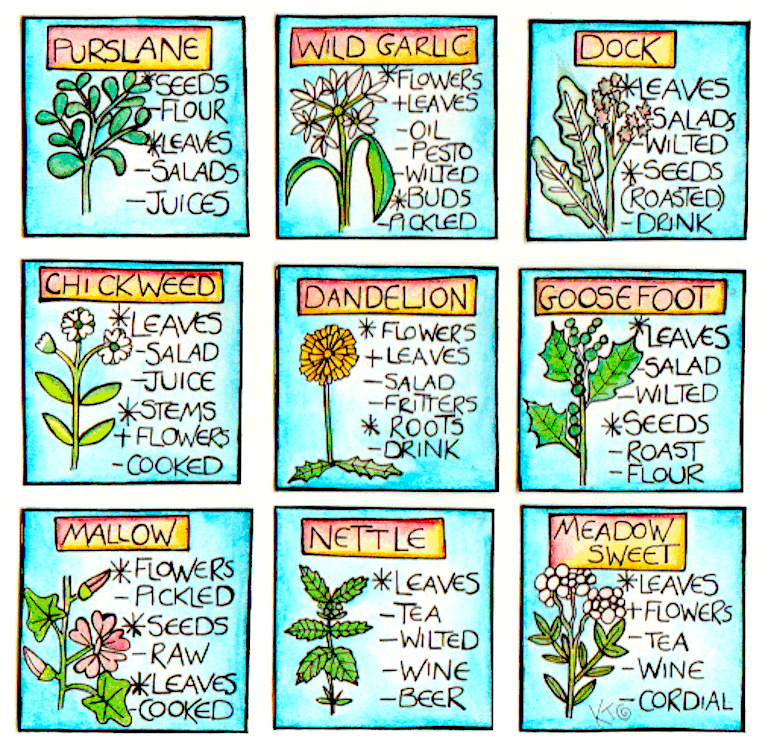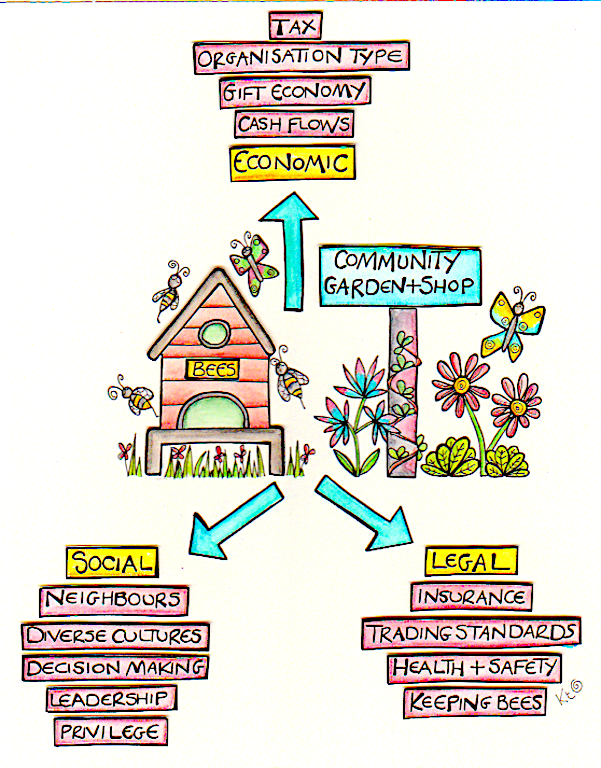
What is Integrated Pest Management
Integrated Pest Management means using observation and creativity, instead of chemicals.
You’ve likely heard the term Integrated Pest Management, often called simply IPM, which includes a huge variety of methods and techniques, including cultural, biological and structural strategies to control a multitude of pest problems, without using any sorts of chemicals.
Integrated pest management (IPM) is an approach to pest control which integrates cultural, biological and chemical methods. IPM is based on the principle that the best way to manage pests is to prevent them from occurring in the first place.
The key to successful integrated pest management is to identify the problem early and treat it effectively. This means identifying the pest, understanding its biology and ecology, and developing a strategy for dealing with it.
In order to do this, we need to look at the pest itself, its environment, and how it interacts with both. We also need to consider our own resources and capabilities.
Once we’ve identified the pest, we need to determine whether it poses any threat to human health or property. If there is potential harm, we need to decide whether we can afford to deal with it ourselves, or whether we need professional help.
Finally, once we’ve decided what action to take, we need to implement it. In most cases, this involves monitoring progress, evaluating results, and adjusting strategies accordingly.
Integrated Pest Management can be understood (and achieved) through this handy acronym, which has the same 3 letters:
- Inquiry: ask questions about the pests. What are they? In which habitat do they thrive? What are the known organic controls? What do they eat? What eats them? Also, ask questions of other local gardeners. Chances are, they’ve met those bugs too, and they’ll have lots of tips for you.
- Prevention: design your site so that pests cannot thrive. This means making sure there is enough air circulation between plants, keeping soil fertility high, and avoiding standing water, piles of stagnant debris, and other areas that create cesspools of harmful insects and disease. Prevention also means creating closed-loop ecosystems that create habitat for the “good” bugs, so they can eat the “bad” bugs!
- Monitoring: tune into your plants, check them often for signs of infestation, keep track of how well your Integrated Pest Management strategies are working, and adjust/add new strategies as needed.

In conclusion, integrated pest management is a method of pest control that combines environmental controls, biological controls, and physical controls. Integrated Pest Management plan is a systematic plan for controlling insects, rodents, mites, weeds, fungi, nematodes, and other pests.
Integrated Pest Management methods and strategies for your whole-system design
This section by Kelda Lorax
No creature fits neatly into a category of always bad (a varmint!) or always good (a cute critter.) As we watch the parade of wild species through an ecosystem, and seek to carve out space to feed ourselves, it’s helpful to think of ourselves as encouraging beneficial or much-loved wildlife closer to us, while discouraging undesirable activities. It’s of little use to blame the animal for being itself.
Here are some strategies to help create homes for a healthy balance of creatures:
Create homes
Consider how you can offer habitat for the wildlife in the surrounding landscape. Water sources like bird baths or ponds are strong invites. Changing aesthetics to let old plants linger through the winter provides homes for spiders, who are very important predators that keep your garden insects in check. Places in a landscape where plants can be thick and undisturbed are often the pathways and wildlife corridors by which animals come and go.
Invite predators
These are often scary-looking bugs like wasps, assassin bugs, praying mantis, ladybugs (don’t laugh, many a gardener has hated and killed their larvae mistakenly), lacewing, etc. They’re great news because they’ll scare and eat your garden pests, which often look fat, grubby, or have lovely disguises like cabbage moths. We want the ones that look like dragons to balance it out.
Encourage (Some) Parasites
Yes, really! Certain adult insects won’t eat your garden pests, but their children will! These are predators, but more gnarly. If you see something like the following image (tomato horn worm pest being parasitized by wasp cocoons), you might want to say a prayer for the horn worm, but be happy for your tomatoes.
Attract Pollinators
This goes way beyond honeybees to native bees, flies, bats, beetles, hummingbirds, and more. Pollinators perform essential services in all terrestrial ecologies, and the protection of habitat that allows them to thrive is essential to life on this planet.
Yes, read that sentence twice and take a moment to contemplate it. In the bibliography below, there are resources from Xerces Society, a premier conservation non-profit working on invertebrates. They outline four simple steps to protect pollinators, that subsequently protect a lot of different kinds of critters too.
These steps are:
- Provide flowers and nectar sources. As varied as possible and with overlapping bloom-times to fully set out the buffet for a wide range of pollinators.
- Provide homes in your habitat areas. Homes for pollinators can just be untrimmed flower heads, piles of sticks, patches of bare soil, host plants and actual housing. A good rule of thumb as a permaculture designer is to let your yard be a little wild and diverse and not over-managed. This is important! If that seems aesthetically disturbing, think about how your site can still feel well-kept to you while also being just right for the critters. These can be Zone four and five strategies that you don’t need to see every day.
- Don’t use pesticides. This is where all the permaculture strategies come into play. Unfortunately, even organic (OMRI-listed) pesticides still occasionally impact non-target species, so focus on building up your site’s resiliency in other ways.
- Share and publicize what you’re doing, spread the word. Xerces has plaques for your garden and a pledge to sign online. The main point is that habitat works best in your yard when there’s plenty of habitat in the neighborhood and region. We need to work together as communities to protect pollinators.
Innovate deterrence
This will be a mix of attracting an animal or activity to a different place, and scaring them slightly into going. It could mean making a varmint’s food prize just too annoying to access (think poly cultures, thorny plants, scarecrows).
It could be the smell of humans, or the barking of dogs, that make them uncomfortable. Plan your wildlife corridor to direct animals away from precious gardens and plants, and have it full of its own fecundity. Animals do not intentionally set out to damage something you love. They might just need some direction.
Here are some examples:
- Assign a toddler the chore of chasing garden pests out of gardens. Give them a hose with a sprayer nozzle to make the point clear. Animals can be trained in this way. Plus it occupies the toddler, and waters the garden a little bit.
- Don’t totally clear or mow a site before planting. The brushy, tangly nature of scrub or pasture makes any fencing more effective. Deer will jump over fences clear on both sides, but they generally won’t want to walk through tangly bits to jump over a fence onto other tangly bits of an unknown nature.
- Know your pest’s daily schedules. If rabbits are feeling entitled to the garden early in the morning, by all means make them feel uncomfortable and start your day there. Likewise with slug hunting after dusk.
- Some treats that deter varmints elsewhere: Flowering buckwheat for deer, dry soil for pooping cats, compost piles for chickens, beer for slugs (although, anecdotally, it does seem to attract neighbor’s slugs onto your site, too), etc.
- Here’s an article focused on the organic control of slugs and snails!

Want to learn more about this and other topics related to permaculture, sustainability, and whole-systems design? We offer a range of FREE (donations optional) online courses!
How will integrated Pest Management fit into your system?
Go outside and walk around your site. Look for as many different kinds of insects, pollinators, predators, and whatever other creatures you can find. Learn about them. Learn what they are, what they eat, and what eats them. Then devise ways to create a balanced community.
Try creating a mason bee house! They can be created in two general ways:
- By drilling into a block of wood or making non-toxic paper tubes. They are solitary bees which overwinter in holes packed up with mud. They are excellent native bee pollinators appropriate for any garden. As you assess what tools and materials you have available, know that the drilled holes or tubes need to be 6” long and just wide enough to fit a #2 pencil. Materials should be non-toxic (no treated woods or dyed paper), and the whole structure should be sheltered from rain, stable enough to survive heavy winds, and somewhere eastern-facing or sunny (though not too sunny in hot climates.)
A good overview of the block method here.
(you can also use parts of downed trees or thick branches) - Or try the straw method here.
(you can also use hollow plants like elderberry or reeds)

Relevant Links and Resources about Integrated Pest Management
So you want to plant a pollinator garden? This article will help get you started.

Natural Pest Control: Using Predators to Protect Your Garden. This article discusses how to attract beneficial predators.

Here’s another article, also from Becky Ellis, about how urban bee keepers can help save wild bees.

Want to get into beekeeping? Here’s an introduction to the different types of beehives.




